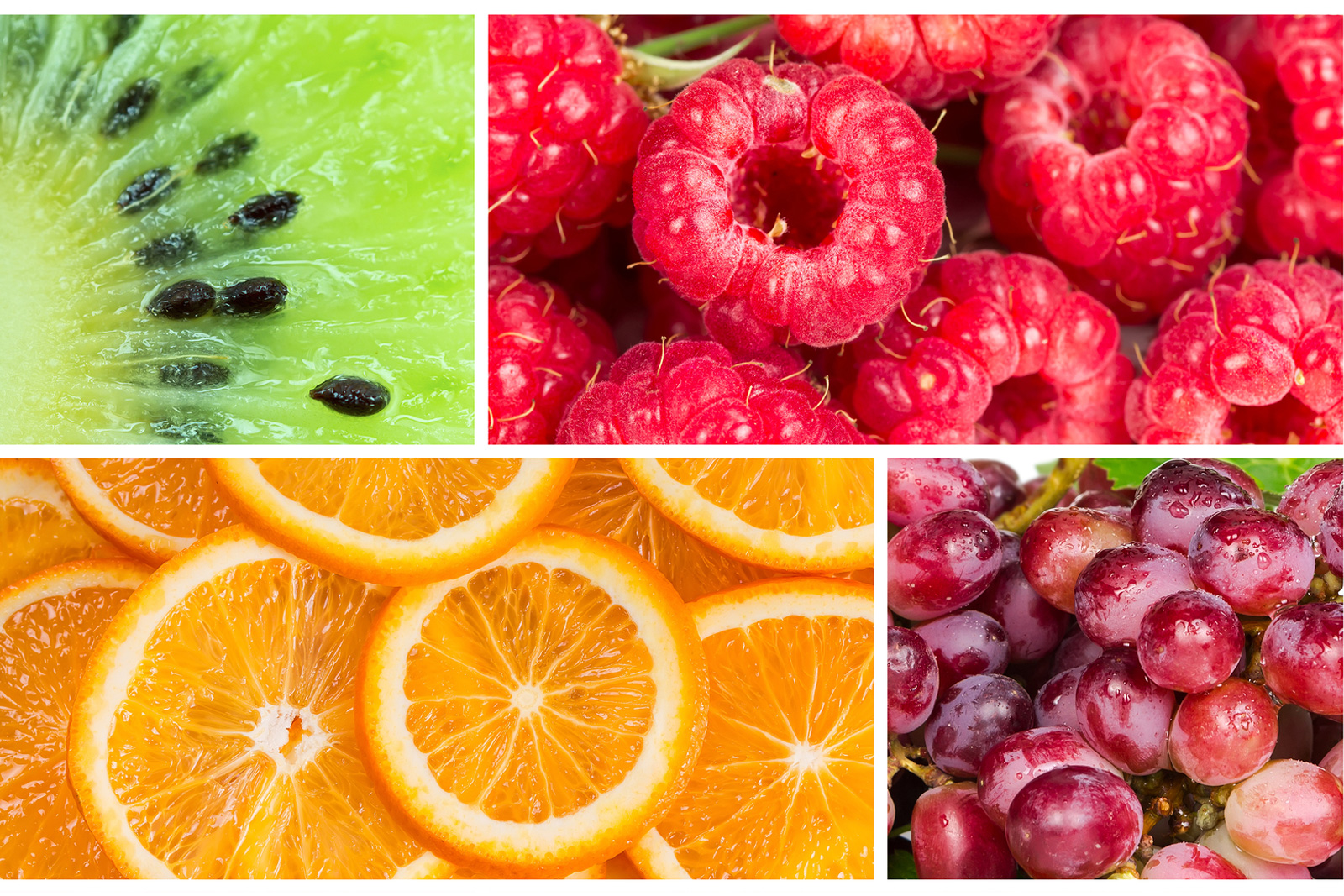Cold and flu season has hit many people hard here in Maine. I’ve managed to escape illness for the most part this season, something I firmly believe is connected to the thought I put into what I’m eating.
While a healthy diet can’t guarantee that you won’t fall prey to germs in the air, a healthy immune system will be able to fight those germs off much better than an immune system weakened by a lack of essential nutrients.
While it’s nice to avoid minor illnesses like colds, it’s even more important to be sure your immune system is functioning properly to keep you from developing chronic disease and inflammation. Let’s take a look at what a healthy immune system does and the impact of inflammation on your health. Then I’ll tell you some of the top foods that can give your immune system a helping hand.
What Does Your Immune System Do?
Your immune system is a built-in defense mechanism, designed to ward off unknown invaders (pathogens) in your body. You can’t survive without this complicated system of organs, cells and proteins that keep your body thriving.
When things are going well, your immune system goes unnoticed. But when your immune system isn’t functioning properly, you are confronted with especially aggressive pathogens, or a new pathogen is introduced, things can quickly spiral downward.
The primary functions of your immune system are to recognize substances that don’t belong in your body and remove or neutralize them. These include bacteria, viruses, parasites, fungi, environmental toxins, and cells in your body that have changed due to illness, such as cancerous cells.
Your immune system has two major components: one is innate, the other adaptive (acquired). Your innate system is a function of evolution, providing general protection against pathogens. The adaptive system is more specific, producing antibodies to target specific pathogens you’ve already encountered in your lifetime. Although distinctly different, these two systems work hand in hand to protect your body.
Typically, your immune system can tell the difference between healthy cells and those that don’t belong. But sometimes, the signals get crossed, and your immune system can attack healthy cells in your body as if they shouldn’t be there. This is called an autoimmune response. With this response comes inflammation, which can result in a variety of symptoms designed to let your body know something’s not right.
The problem isn’t with acute inflammation, an appropriate response to trauma, infection or allergy which can cue you in to the problem. Low grade, chronic inflammation, however, is another story.
The immune response should shut off when the threat is gone; when it doesn’t you may end up perpetually dealing with a low level of inflammation leading to symptoms like aches and pains, swelling or stiffness; chronic congestion; diarrhea, indigestion, or other digestive symptoms; skin conditions; shortness of breath; and weight gain. The key, then, is understanding how a healthy immune system can help reduce this constant inflammation.
The Connection Between Your Immune System and Inflammation
The innate and adaptive immune systems are in constant communication with each other, striving to maintain balance in your body. The signals sent out in response to internal threats are designed to prompt a series of biochemical reactions that result in inflammation as a protective measure. But for some people, these reactions are ongoing, which is where the problem lies.
So how can you tell if you have chronic inflammation (beyond the obvious discomfort you experience)? There are some pro-inflammatory markers that can be measured, including C-reactive protein, IL-1, IL-6, IFN-gamma and TNF-alpha. If levels are high, it may be a sign that your immune response is always on.
This is a problem because inflammation uses up a lot of energy, which means other important systems might not be able to function optimally. Also, your inflammatory cells are quite powerful, which is great for getting rid of threats before they cause harm, but not so great for your overall health. And when the balance is tipped, it can be hard to reverse, quickly leading to disease.
Research has shown a connection between imbalanced immune response and a range of health problems, including metabolic disorders (such as type 2 diabetes), mental health disorders (like schizophrenia and major depressive disorder), obesity, and much more.
How Does Food Effect Your Immune Response?
While there are still big questions around the link between lifestyle choices like diet and better immune function, I’ve heard enough anecdotal evidence to believe it makes a big difference. So many women have changed their diet with my guidance and ended up feeling better than they ever had. But it’s not as simple as it might sound.
Every individual is so different that it’s difficult to pinpoint exactly what might be triggering an overactive immune response; there’s simply not one answer that applies to everyone. Food sensitivities, like gluten or dairy, might be at play. Sugar is a big factor in inflammation, especially for those who are sensitive to the sweet substance (and sugar is everywhere, so it’s tough to avoid). Underlying gut issues could be a factor.
That’s why, as a functional medicine practitioner, I take the time to look at the complete picture and help my patients find exactly what will quiet the inflammation in their unique circumstances. At the same time, I tell every woman I see that she can’t go wrong by adding more fruits and vegetables to her daily intake. They’re natural, delicious, and packed full of amazing nutrients your body might be craving.
Fill Your Plate with Vibrant Color to Boost Your Immune System
“Eat the rainbow” is a common catchphrase these days. I believe it’s a simple way for women to understand that a variety of colorful foods on their plate is the best way to be sure they’re getting the right balance of nutrients.
It’s not enough to simply eat the USDA recommended five to nine servings of fruits and vegetables per day – though that’s certainly a good start! But varied nutrients make a difference, and color is one way to know what nutrients you’re getting from your food.
Red, blue and purple hues often contain anthocyanins, which have powerful antioxidant properties that can prevent cell damage caused by free radicals. Anthocyanins may also lower risk of heart disease, macular degeneration, memory issues, cancer and stroke.
Red fruits and vegetables also typically contain lycopene, which can lower your risk for heart disease and cancer. And that’s not all. These vibrant fruits and vegetables often have other essential minerals and vitamins, including potassium, vitamin C, folate, and Vitamin A.
Orange and yellow fruits and vegetables contain compounds called carotenoids, which may help boost immune system functioning, as well as lower risk of heart disease, problems with vision, and cancer. One particularly well known carotenoid is beta-carotene, which your body uses to produce vitamin A. Folate, potassium, bromium and vitamin C are other important nutrients that orange and yellow fruits and vegetables provide.
Green fruits and vegetables contain chlorophyll which studies have shown can be effective in treating hemoglobin deficiencies, heal wounds, and reduce risk of some types of cancer, among other benefits . Chlorophyll may also boost energy, promote hormonal balance, and even assist with weight loss. Many green fruits and vegetables also contain Vitamins A, C, and K, along with folate.
When thinking of colorful options, you might pass over white choices in favor or more vibrant colors, but that would be a mistake. White fruits and vegetables contain polyphenol compounds called anthoxanthins which might help lower risk of heart disease and cancer. Garlic, and some other white foods, contain allicin which may reduce risk for high cholesterol and high blood pressure as well. One study, published in 2017, found that eating more white fruits and vegetables could help protect against colorectal cancer.
7 Colorful Ways to Build a Strong Immune System
All fruits and vegetables have valuable nutrients, so you really can’t go wrong if you simply eat a wide selection every day. Some, however, have been shown to pack an extra strong nutritional punch. These seven regularly show up on lists of the best foods to eat to keep your immune system healthy and strong.
1. Berries
Berries are a good source of vitamin C and antioxidants, especially the dark ones, like blueberries. The anthocyanin in these deep hued berries increases anti-inflammatory compounds and can help prevent cell damage.
Berries also contain a range of other nutrients, including potassium, Vitamin A, manganese and dietary fiber. In some studies elderberry extract appears to block flu viruses. Cranberry juice compounds have been demonstrated to have beneficial impact on the prevention and treatment of urinary tract infections and decreasing use of antibiotics in the elderly.
Berries are delicious and versatile. Try them in smoothies, salads, stirred into yogurt or oatmeal, or by the delicious handful just as they are!
2. Cruciferous Vegetables
This family of vegetables includes broccoli, bok choy, cauliflower, kale, cabbage and brussels sprouts. Cruciferous vegetables contain loads of vitamins A, C and E, along with antioxidants. They’re also a great source of fiber.
Eating these vegetables regularly has been shown to have positive effects on many forms of cancer as well. To get the most out of these vegetables, eat them raw or lightly steamed.
3. Leafy Greens
Leafy green vegetables are a great way to get a multitude of vitamins and minerals, antioxidants, and phytonutrients like chlorophyll. Phytonutrients are natural chemicals plants make to protect themselves – and they can do the same for you! The variety of greens available means you never have to get bored with your meals.
Try adding green leafy spices like parsley, basil, dill, mint or thyme to your recipe; throw spinach, dandelion greens and sprouts into a salad for variety; or cook up some swiss chard or collard greens. If you don’t really like the flavor of greens, try adding them to smoothies. If you combine them with sweet berries or other fruit, you might not even notice they’re there!
4. Citrus Fruits
Vitamin C is thought to boost production of white blood cells, which is important in fighting off infection. But while you may think its just the vitamin C that helps citrus make this list, these fruits have plenty of other nutrients to offer.
Thousands of flavonoids have been identified, and many are found in citrus fruits like oranges, lemons, and grapefruit. Some of these have been shown to impact immune dysfunction, such as growth of cancer and high inflammation. Citrus fruits can add flavor to your water, be sliced thin to use in recipes, or be enjoyed as a sweet addition to a meal or snack in between meals.
5. Bell Peppers
Did you know that bell peppers have more vitamin C than an orange? That makes them a great choice to bolster your immune system – especially if you’re trying to reduce sugar consumption – even the natural kind found in fruit can have a big impact on the way some people feel. Add bell peppers to salads, stir fry, and soups for a little vegetable variety. Or, you can slice them and eat them raw, dipped in guacamole, for a delicious treat.
6. Sweet Potatoes
Sweet potatoes are rich in beta carotene, a great source of vitamin A. One of the benefits of beta carotene is that it can help keep skin healthy. Sweet potatoes can be enjoyed in numerous ways: cut into chunks and roast for a delicious side dish at breakfast, slice thin and air fry some homemade sweet potato chips (without the preservatives), or cut thick and bake them into “bread slices” for your favorite burger or sandwich.
7. Kiwifruit
If you’re in the mood for something a little more exotic, try kiwifruit, which are full of nutrients like folate, potassium, and vitamins K and C. Although the furry skin doesn’t appeal to many people, it’s completely edible, triples the fiber in the fruit, and boosts the vitamin C content as well. You can eat it as is, slice into a fruit salad, or include it on a fruit kabob for a fun, healthy snack.
Beyond Fruits and Vegetables
Although this article is focused on vibrant fruits and vegetables, I’d be remiss if I didn’t at least mention a variety of other foods that can help keep your immune system strong. Spices like garlic, tumeric and ginger are a great way to add flavor – and fight off disease. Fermented foods like yogurt, kefir, and miso help keep your gut bacteria balanced so your immune response doesn’t go into overdrive.
Vitamin E might not get the same attention as vitamin C, but it’s essential to a healthy immune system. Because it requires fat to be absorbed, nuts like almonds, which have both vitamin E and healthy fats, are a perfect source.
Eating for a Healthy Immune System is Easier Than You Think!
With all of the amazing choices, there’s simply no good excuse for not eating enough fruits and vegetables. We don’t have a lot of control over toxins in our environment or germs in the air, but we do have control over what we put in our bodies! And when we eat to deliberately give our immune system its best chance at self-defense, we can stay feeling vibrant and strong all year long!
References:
https://www.medicalnewstoday.com/articles/322412.php
https://www.cnn.com/2019/02/05/health/immune-system-diet-food-as-fuel-explainer/index.html
https://www.healthline.com/health/food-nutrition/foods-that-boost-the-immune-system#other-options
https://healthyeating.sfgate.com/colors-fruits-vegetables-play-important-role-1660.html
https://www.ncbi.nlm.nih.gov/books/NBK279364/
https://www.health.harvard.edu/staying-healthy/how-to-boost-your-immune-system
https://healthyeating.sfgate.com/fruits-vegetables-boost-immune-system-7370.html








